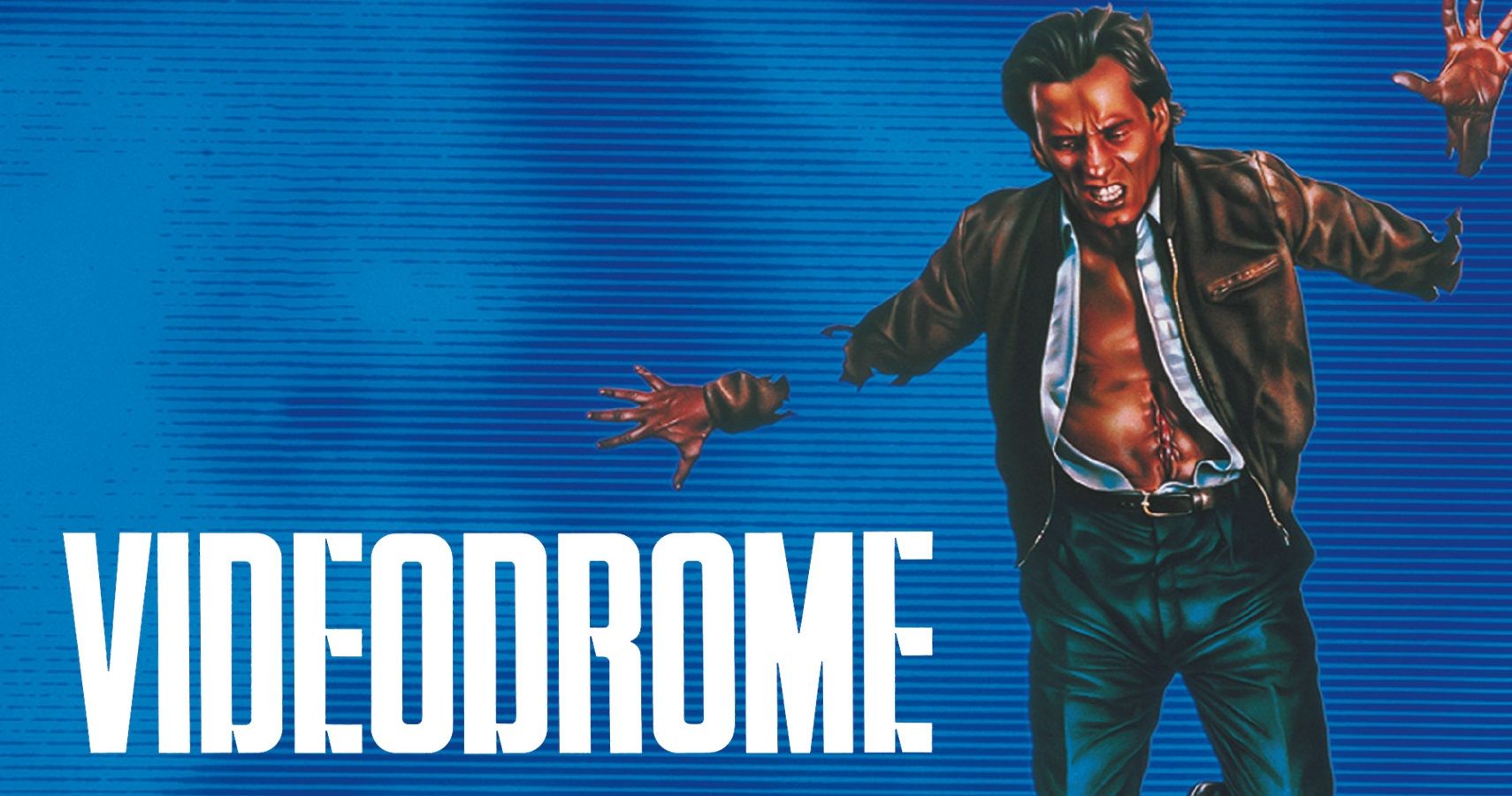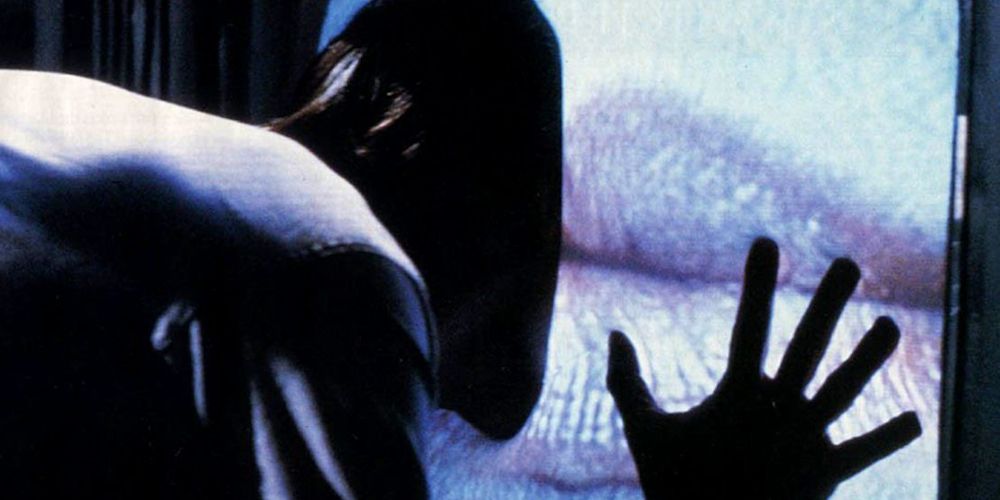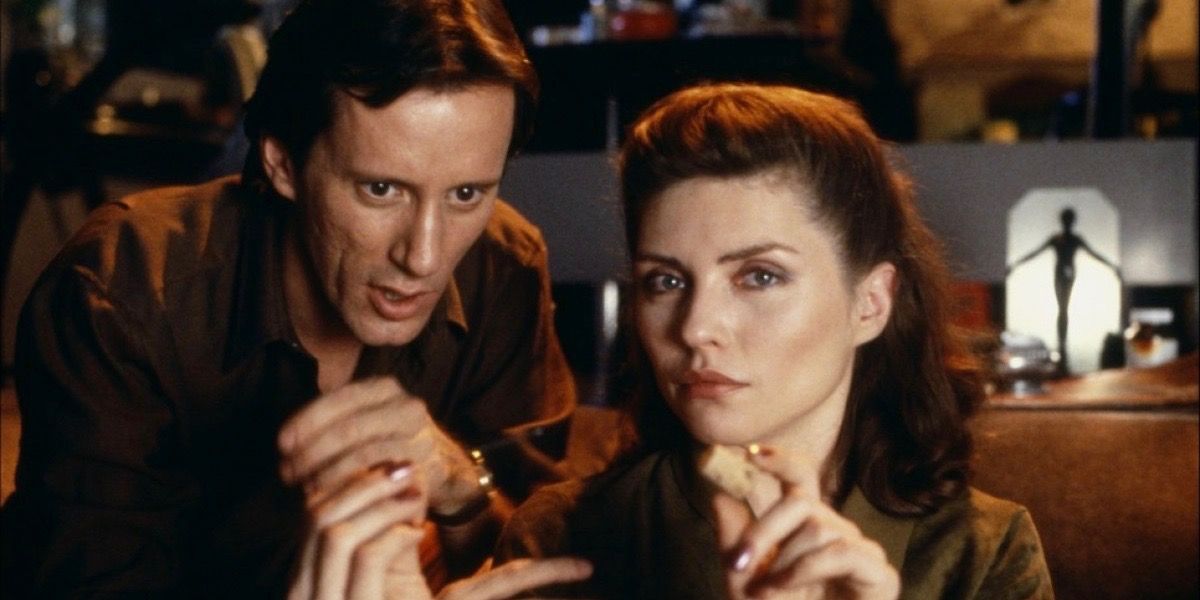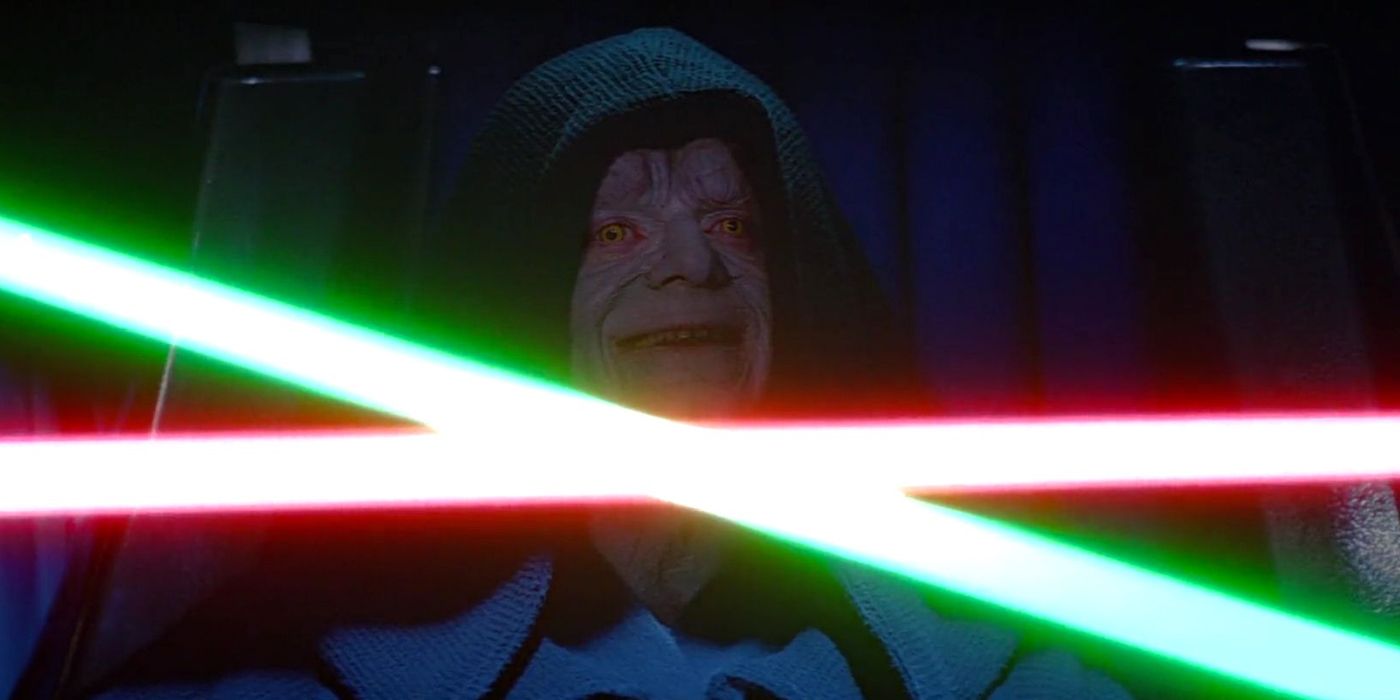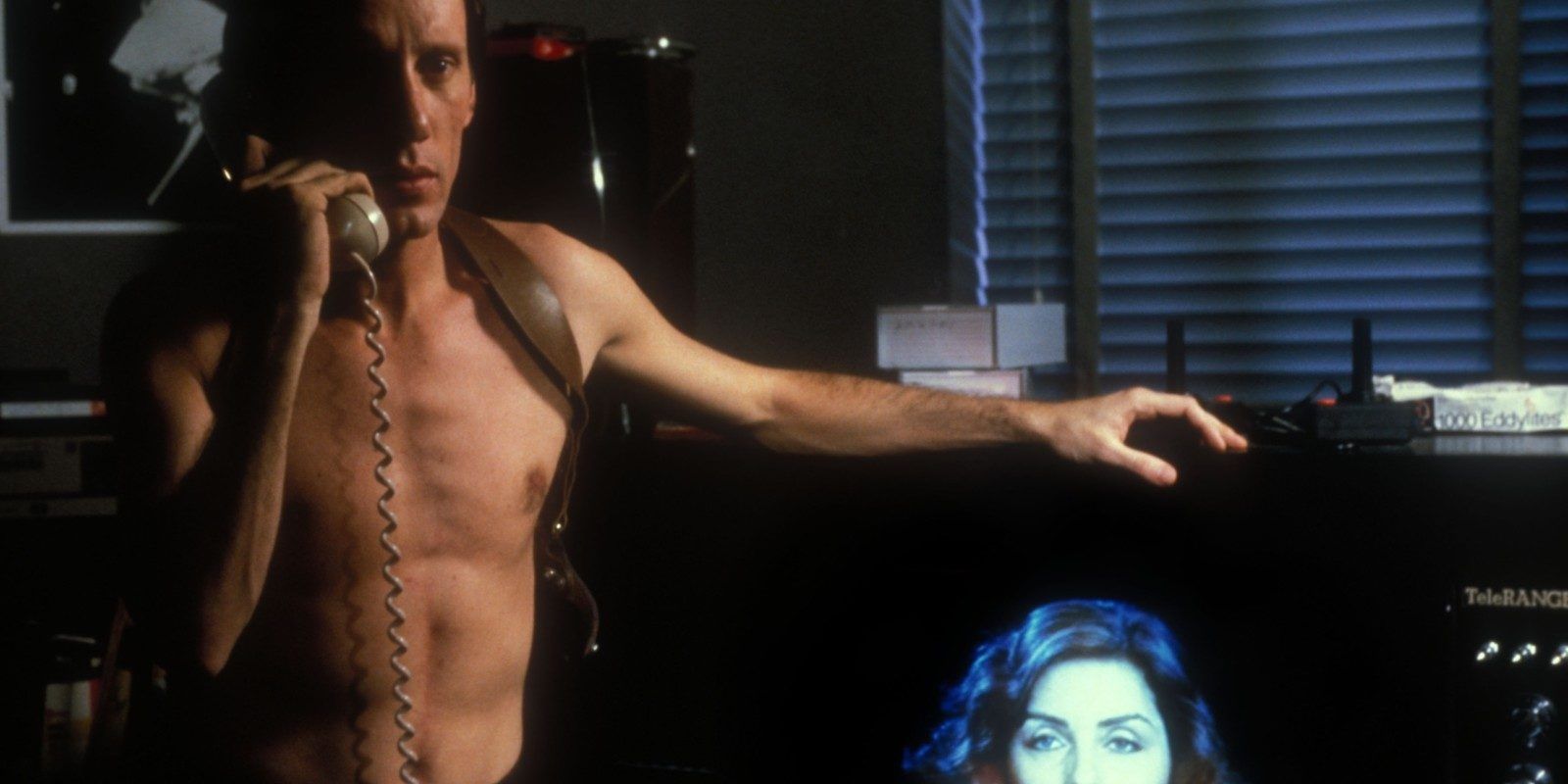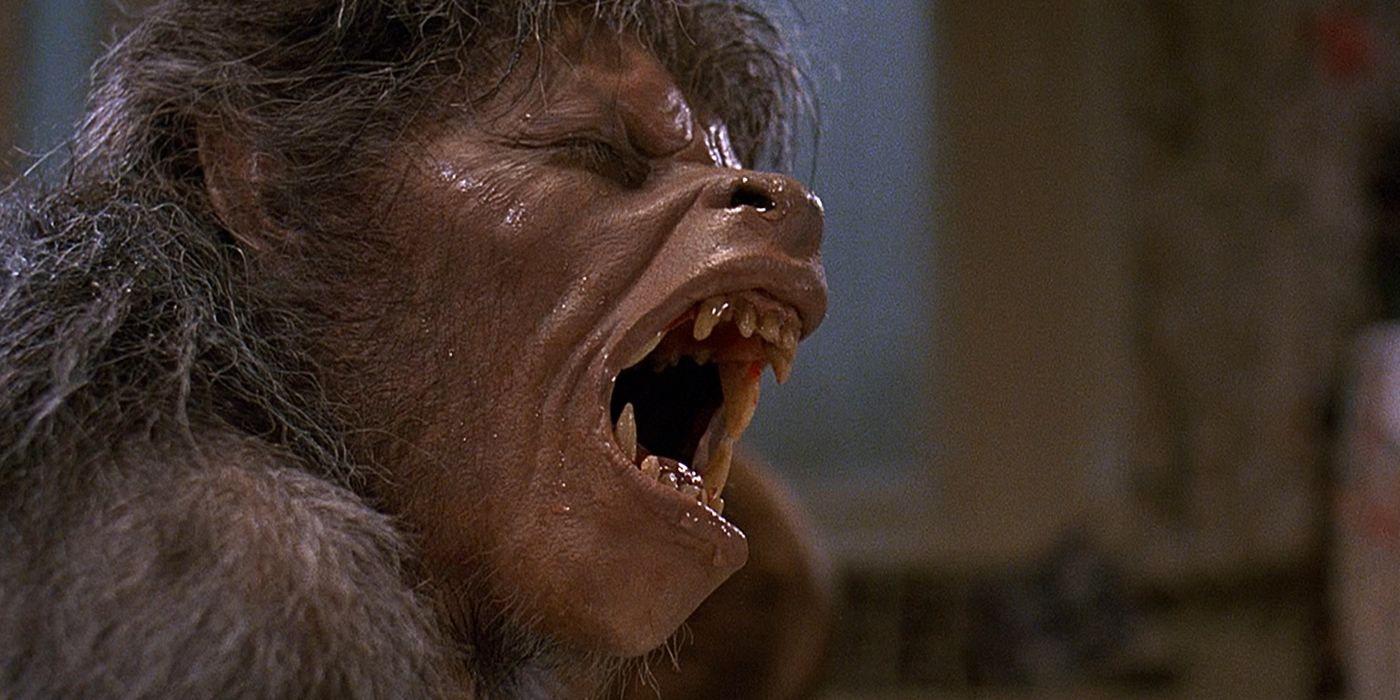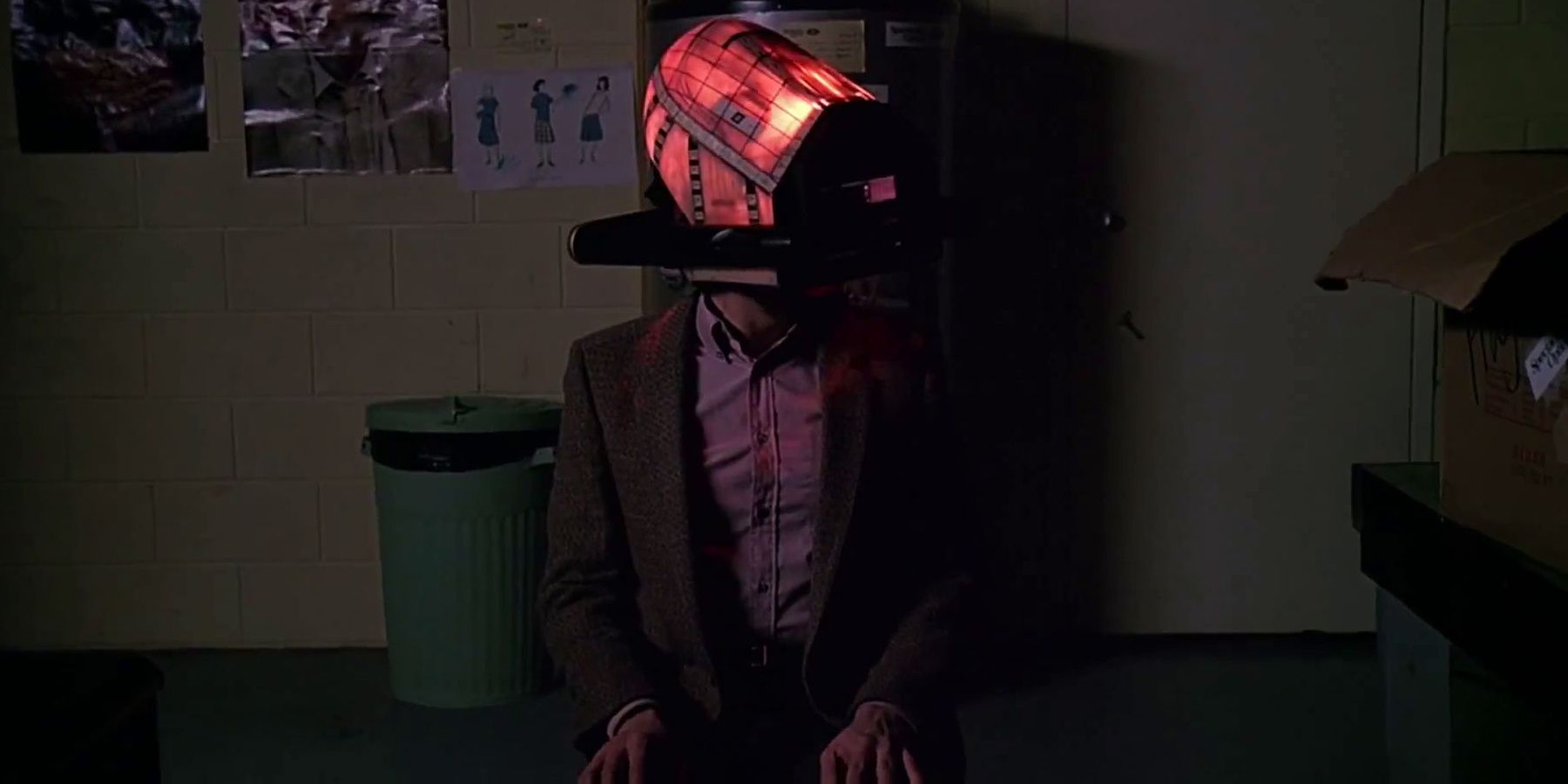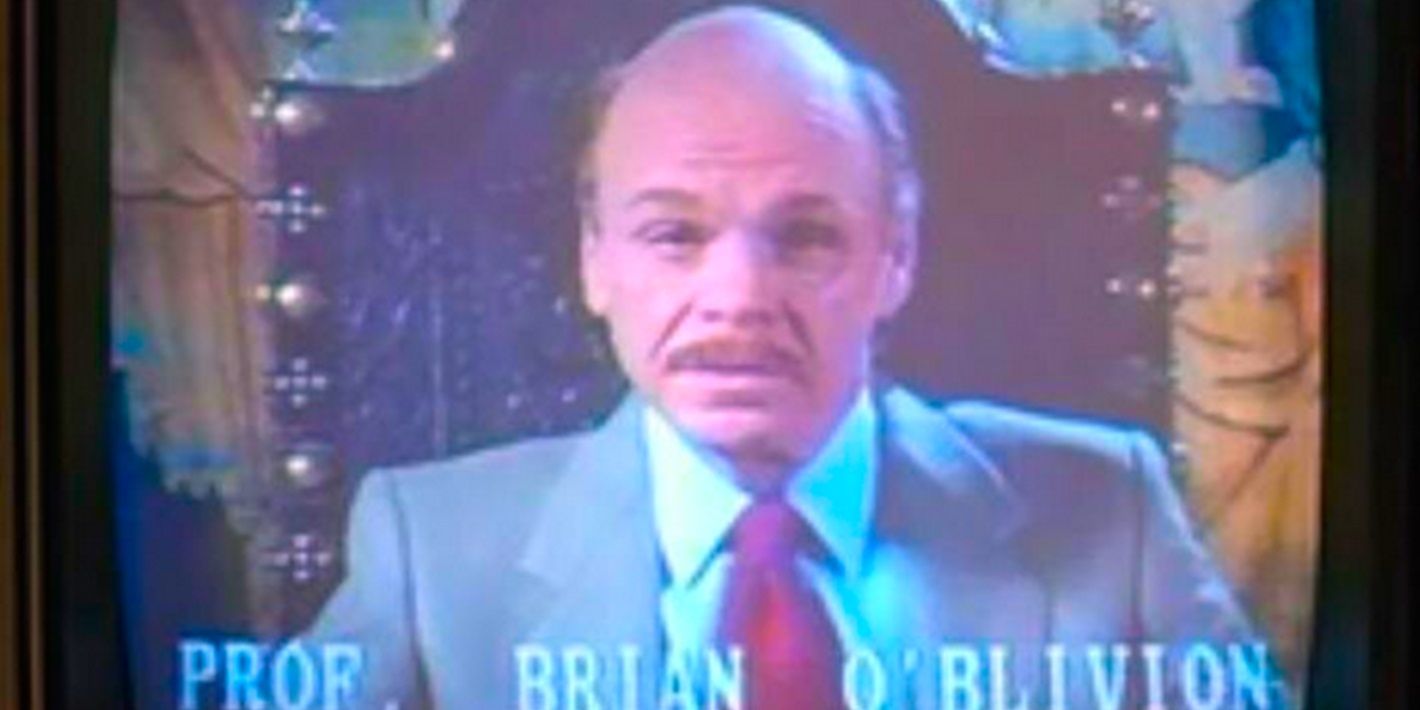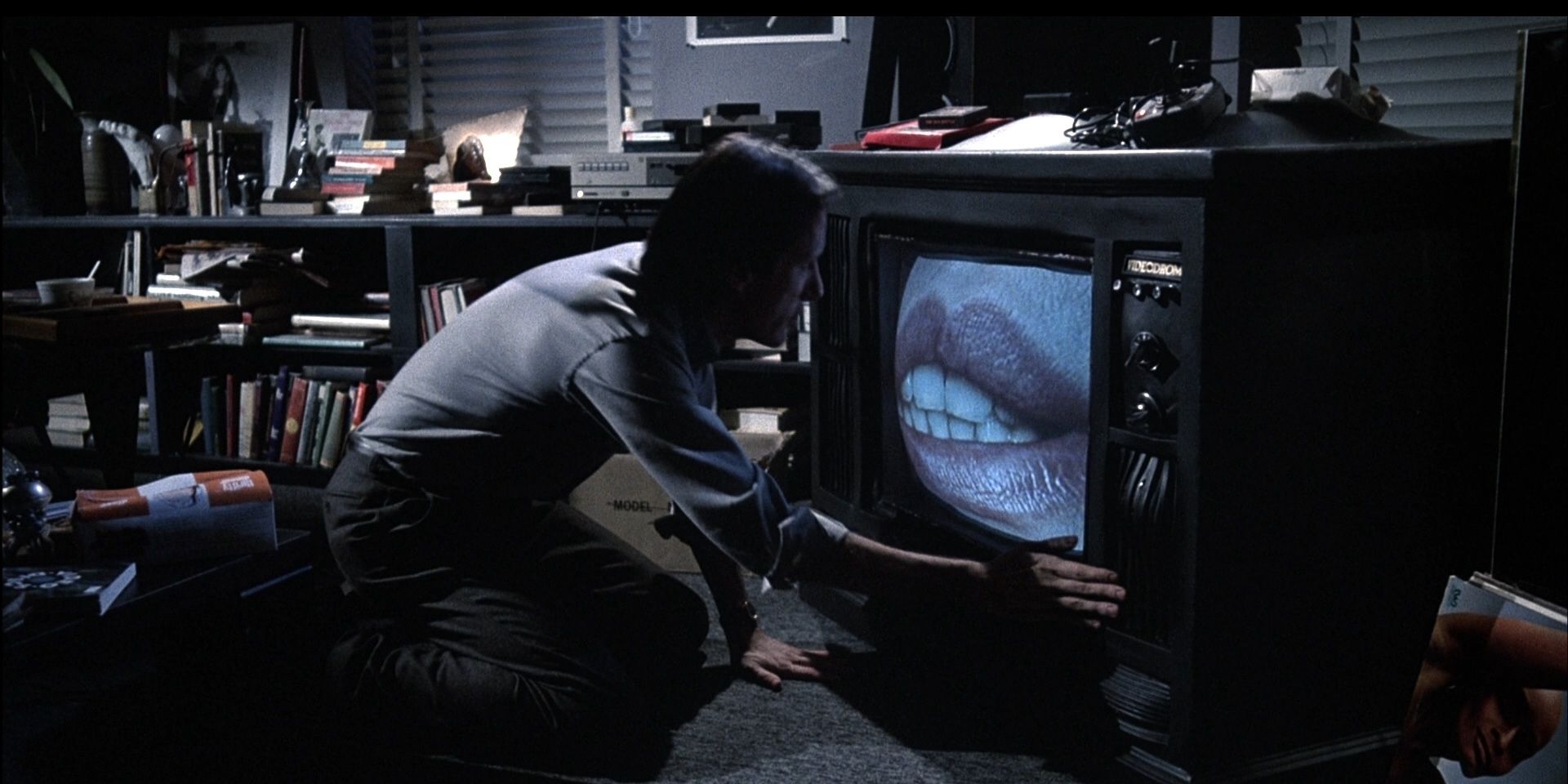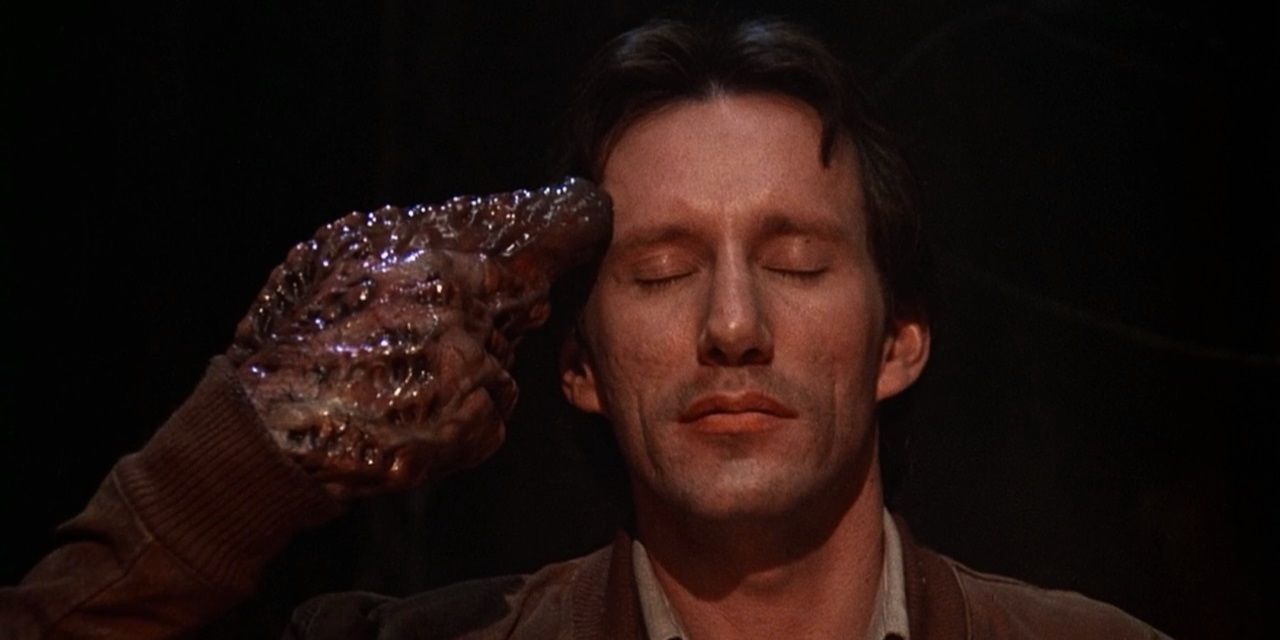After taking the moviegoing public by storm with his particular brand of body horror in movies like Scanners, David Cronenberg made the leap to a major Hollywood studio with Videodrome, a blend of grisly, effects-driven horror and satire of the media. James Woods stars as a TV producer who stumbles upon an evil channel hidden between the airwaves that begins to take over his life.
When the movie was released, despite bombing at the box office, Andy Warhol declared it to be the 1980s’ answer to A Clockwork Orange. There are plenty of fascinating facts from the making of this curious movie.
Videodrome Was Born Out Of David Cronenberg’s Childhood Fears Of Late-Night TV Broadcasts
The initial concept of Videodrome came into David Cronenberg’s head when he was a child. His TV would pick up signals from Buffalo, New York, in the middle of the night after the Canadian stations stopped broadcasting for the day. He used to worry that the airwaves would pick up something that he wasn’t meant to see. And so, Videodrome was born.
James Woods Swore Off Effects-Driven Films After Shooting Videodrome
For the scenes in which Max’s chest opens up, James Woods had to be fitted into a couch with the chest-slit effects glued onto him. After the nightmarish experience of filming these scenes, Woods swore off ever doing another effects-driven movie where things had to be glued to him.
David Cronenberg Turned Down Return Of The Jedi To Direct Videodrome
Following the box office success of David Cronenberg’s movie Scanners, George Lucas offered him the chance to direct Return of the Jedi. However, since Cronenberg was getting ready to shoot Videodrome, he turned down the job.
On top of having Videodrome on his slate, Cronenberg also had no interest in making a movie he didn’t write, so he would’ve turned it down anyway. In addition to Cronenberg, Return of the Jedi’s director’s chair was offered to Steven Spielberg, David Lynch, and Paul Verhoeven.
VHS Tapes Wouldn’t Fit In The Prop Stomach, So Betamax Was Used
Most of the props used for the videotapes were in the Betamax format because they needed to be able to fit inside the prop stomach that the effects team had made for James Woods. VHS tapes were too small to fit in the prop stomach, but Betamax tapes happened to be the perfect size.
Rick Baker Carried Over Some Of His Effects Team From An American Werewolf In London
The groundbreaking special effects in Videodrome were created by Rick Baker, arguably the most famous special effects wiz in movie history. Most of Baker’s crew was made up of 20-year-old technicians, some of whom were carried over from Baker’s team on An American Werewolf in London.
Cronenberg Expected His Videodrome Script To Get Rejected
During a meeting with Pierre David in Montreal to discuss movie ideas, David Cronenberg brought up Videodrome—and another idea that presumably went nowhere—and subsequently began to work on the script.
The director was concerned that, due to the graphic content in the script, it would get rejected by Filmplan. Surprisingly, the script was approved, although Claude Héroux joked that it would receive a triple X rating.
Brian O’Blivion Was Based On One Of David Cronenberg’s College Professors
The character of Brian O’Blivion was inspired by one of David Cronenberg’s college professors who taught him at the University of Toronto. Marshall McLuhan was teaching media studies at the time and influenced a lot of the ideas at play in Videodrome.
McLuhan is perhaps best known for making a cameo appearance as himself in a terrific fourth-wall-breaking gag in Woody Allen’s Annie Hall.
The Effect Of The Moving TV Screen Was Created Using A Dental Dam
Rick Baker created the effect of the TV screen moving around with a video projector and a rubbery sheet of dental dam. In search of a flexible material to use for the screen, Baker initially tested the effect with a weather balloon.
However, it didn’t stretch far enough, but the dental dam turned out to be stretchy enough to get the intended effect for the movie.
Videodrome Was David Cronenberg’s First Movie For A Major Hollywood Studio
After independently helming low-budget movies like Scanners, Videodrome was David Cronenberg’s first movie with financial backing from a Hollywood studio: Universal Pictures. It had the director’s biggest budget yet, $5.9 million, and wasn’t able to recoup it at the box office, taking in just $2.1 million. Of course, it’s since gone on to become a cult classic.
James Woods Came Up With The Ending
Three different endings were shot for Videodrome and the one that was used, in which Max shoots himself, was conceived by James Woods. David Cronenberg planned to shoot an epilogue to tag on the end which would’ve revealed Bianca and Nicki to have their own chest slits, but he never ended up filming it.
There were many reasons why the scene was scrapped: the budget couldn’t accommodate it, the effects would’ve been too difficult to pull off, Debbie Harry came down with the flu, and James Woods was visiting family.

